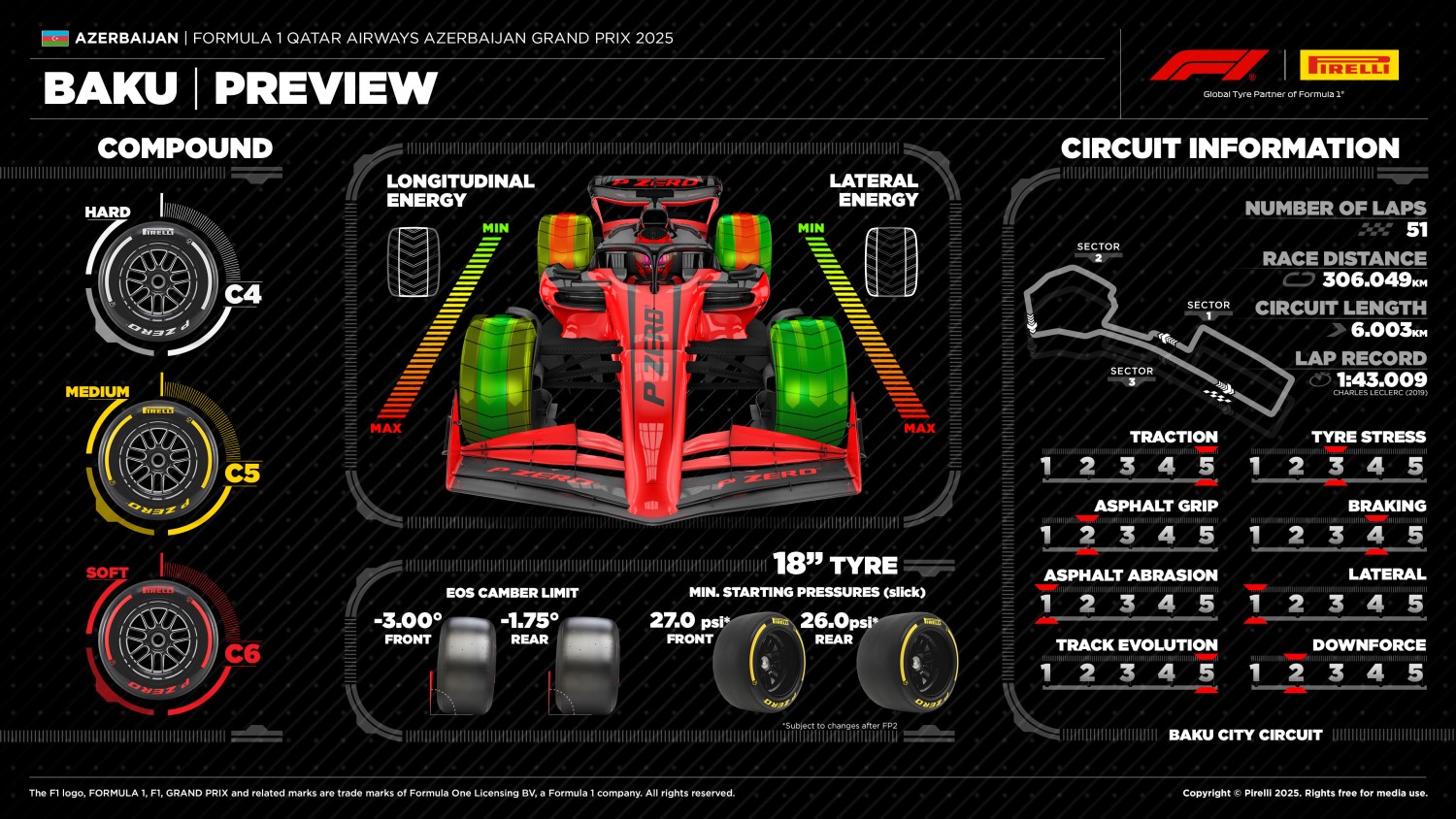Formula 1 News: 2025 Azerbaijan GP (Baku) Preview
Round 17 of the 2025 FIA Formula 1 World Championship takes the F1 Teams to the Baku City Circuit, home of the Azerbaijan (Baku) Grand Prix.
–by Mark Cipolloni–
The city’s name in Arabic (Bākuh, Bākūh or Bākūyā) is derived from the Persian bād Kūbac, meaning “gust of wind.”
Azerbaijan joined Formula 1’s calendar in 2016 – the same year in which MoneyGram Haas F1 Team first entered the World Championship – with a circuit laid out around the streets of capital city, Baku, a location that blends tradition with modernity. The Baku City Circuit winds its way around 6km of the city’s diverse streets.
That includes long straights punctuated by 90-degree turns, a tricky sequence of corners around the wall-lined Old City, and a full-throttle sector with high-speed kinks along a wide boulevard, adjacent to the low-lying Caspian Sea, which encompasses almost a third of the entire lap. The Baku City Circuit is also home to the narrowest stretch of Formula 1 circuit encountered all season, with the left-hand flick at Turn 8 just 7.6 metres wide at its most slender point, leaving little margin for error.
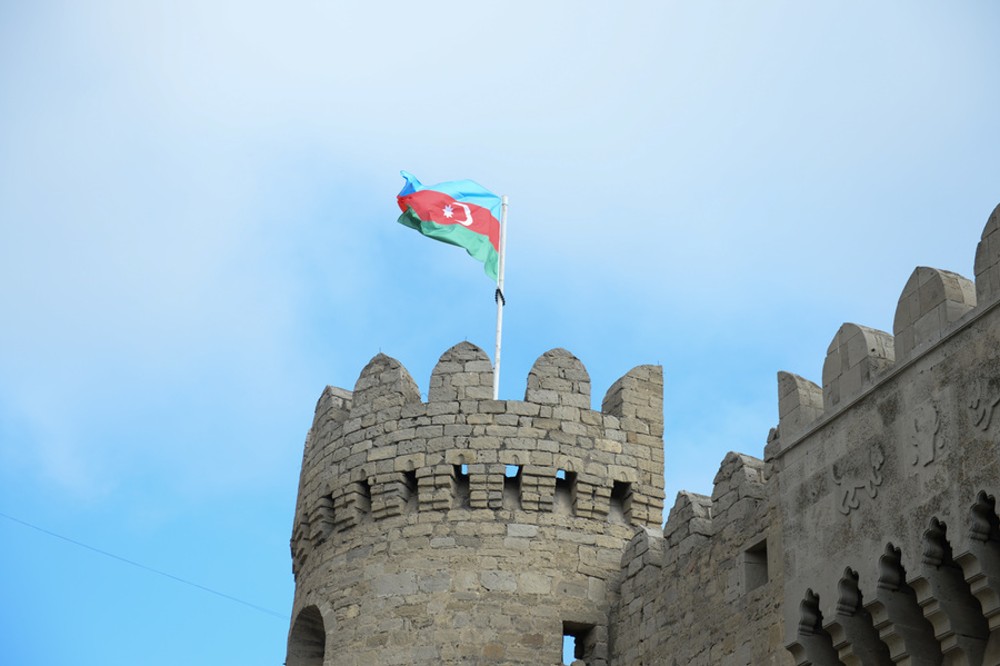
The Baku City Circuit poses varying demands across its elongated layout. The first sector comprises lengthy straights that are interspersed with heavy braking zones and relatively basic 90-degree corners. The circuit narrows into a second sector which features tight and twisty sections adjacent to fortress walls as well as blind high-speed corners. That includes the narrowest section of any circuit on the calendar, the left-hand flick of turn 8, which is just 7.6 meters wide at its slenderest point.
The final sector almost exclusively runs along Neftchilar Avenue, a wide boulevard along which drivers plant the throttle for almost two kilometers, leading back to the start/finish line.
It means a compromised set-up is required, as teams attempt to maximize both aerodynamic prowess and straight-line speed. Keeping tires and brakes in their optimum window is also a challenge, particularly at turns 1 and 3, which come after lengthy full-throttle sections, while teams also need to be cognizant of the wind, with Baku known for its blustery conditions.
This will be the first Sprint weekend of the year, and with the changed format, the work teams and drivers have done in the simulator becomes even more important to make up for less practice time on track. The format of the weekend is a little bit different to the sprint events of recent years with Saturday now a self-contained day and Friday evening qualifying alone setting the grid for the Grand Prix on Sunday.
It will be vital to have a good car right from FP1. The circuit is challenging for the drivers and the engineers and with, very little time to set the car up ahead of Friday evening qualifying, there will be more uncertainty than normal when the cars enter Parc Ferme.
Azerbaijan joined Formula 1’s calendar in 2016 with a city-based event navigating the markedly different districts of capital Baku, where West and East meet adjacent to the Caspian Sea.
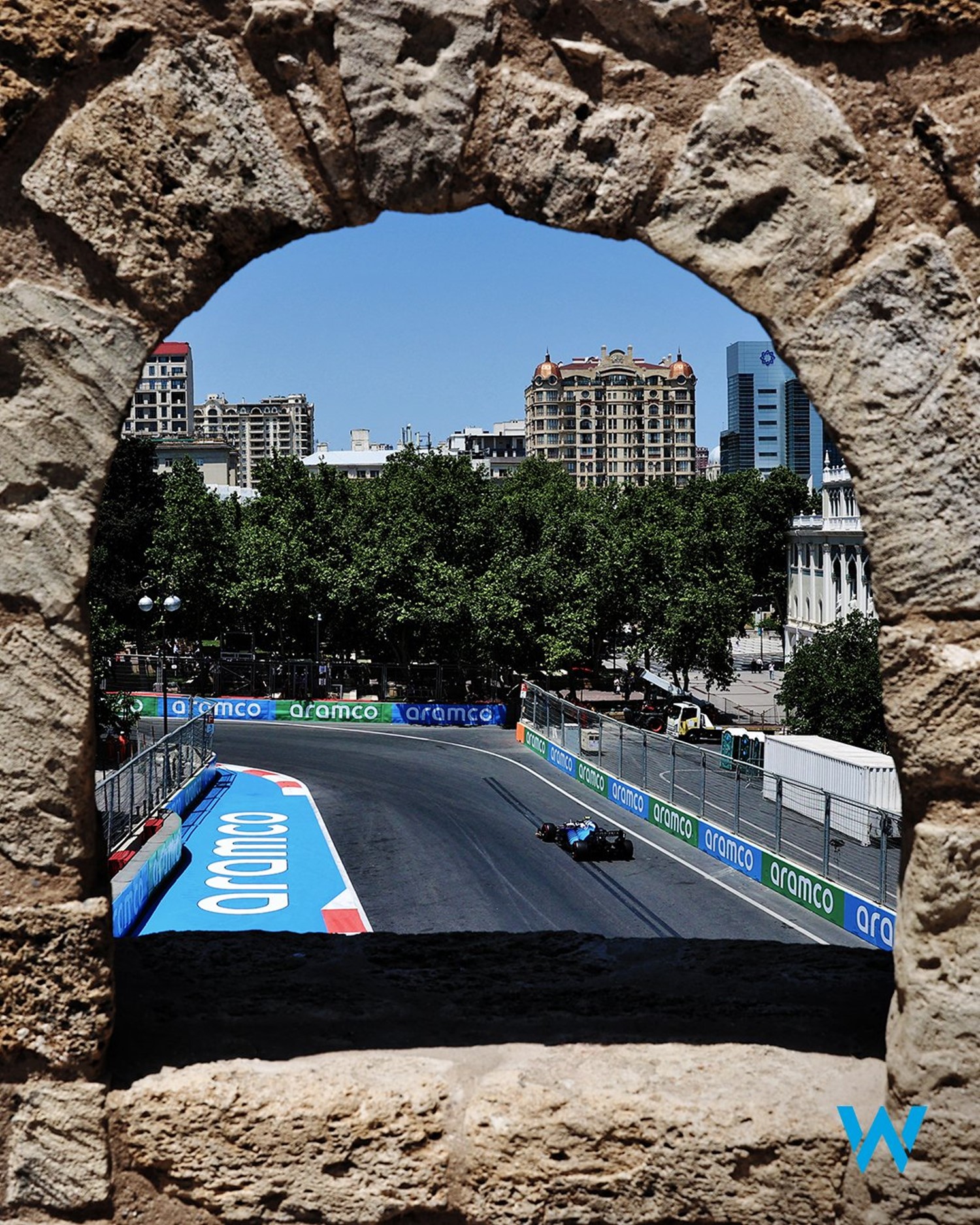
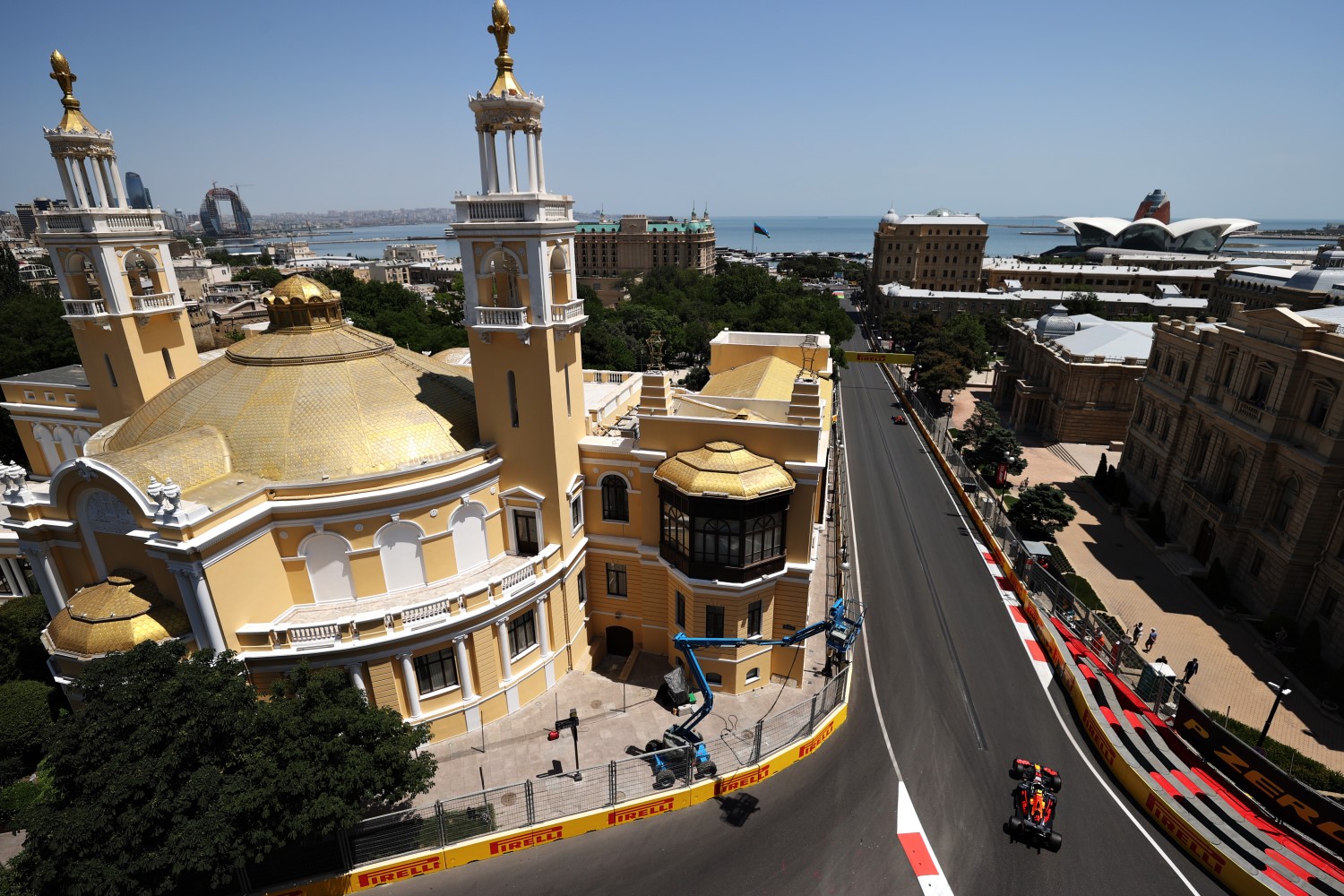
Baku sits as the lowest capital city in the world, at 28 meters below sea level, and has a history that stretches back a thousand years. That is reflected in the layout of its Formula 1 circuit, which winds its way alongside preserved ruins of the Old City, glass-fronted skyscrapers, and architecture from various periods that reflects Baku’s cultural legacy.
The one thing Baku never disappoints for is an exciting race, as we’ve seen many over the past years. The long straight and DRS zones really aid that.
The first sector of Baku City Circuit comprises lengthy straights punctuated by heavy braking zones and 90-degree corners, before a second sector that incorporates tight and twisty turns mixed with blind high-speed segments. That includes the notorious turn 8, at just 7.6 meters wide, where part of the fortress walls doubles up as an apex.

The final sector is almost entirely full throttle as drivers hurtle along one of Baku’s main thoroughfares at speeds approaching 360km/h, where the effect of a slipstream can be very profitable. Baku’s varying demands means a compromised set-up is required, as teams strive to maximize both aerodynamic prowess and straight-line speed, while ensuring tires and brakes are kept in their optimum operating windows.
With the Azerbaijan and Canadian events running on back-to-back weekends in June – it highlights the need for a regional calendar, as being proposed currently by F1 for 2023 onwards.
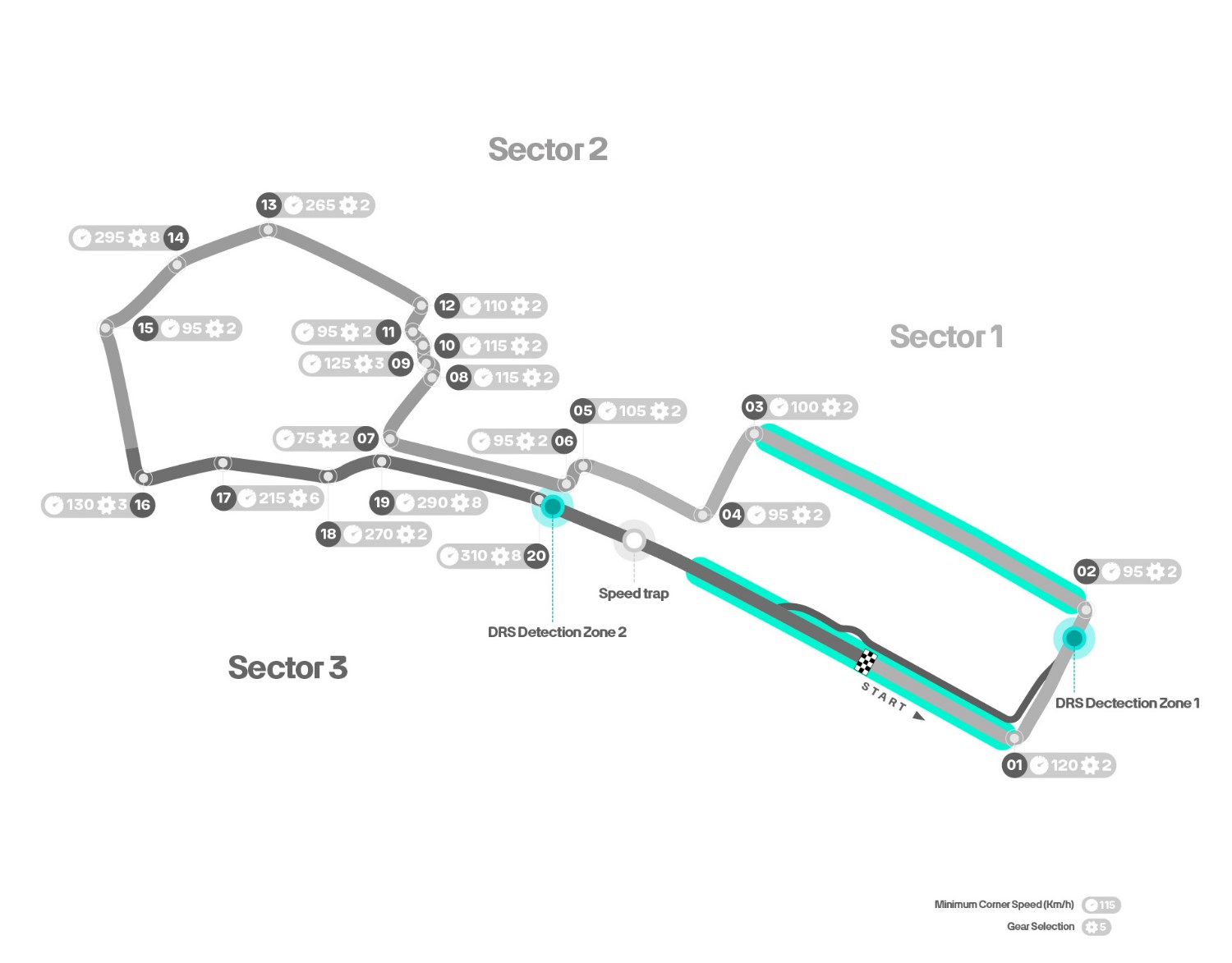
Circuit Insight
Jody Egginton (RB Technical Director)
“The Azerbaijan GP takes place on a street circuit in the capital city of Baku. On the F1 calendar since 2016 it usually delivers exciting racing. The six-kilometer-long circuit provides a good mix of challenges for the engineers and drivers with a long straight requiring good aerodynamic efficiency, as cars can exceed 345 km/h, while the 20 corners, which are predominantly slower speed, make strong demands on braking and traction performance. The circuit passes through the downtown streets including a section in the Old Quarter of the town and in this narrow section of track the proximity of the medieval walls adds a further risk factor for the drivers. This feature together with the more normal barrier-lined sections of the circuit combine to make Baku one of the most technically demanding on the F1 calendar and it can also provide a bit more unpredictability! Our test program for this race will be very busy because, in addition to the normal set up and tire work which we conduct at every event, we also have a number of important tests planned to learn more and optimize the cars around the new floor package which we first evaluated in Monza. In terms of the battle in the midfield, it remains very tight and we are staying focused on maximizing what we can extract from our cars with the goal of fighting for points with both our drivers.”
Race interruptions: Expect some form of stoppage in the race. In the six races held, there have been seven Safety Cars, two red flags and three Virtual Safety Cars. Strategy can be influenced by the timing of these. The softest compound of Pirelli’s range, the C5, will make its 2023 debut here.
Overtaking: Despite being a street circuit, Baku offers plenty of overtaking opportunities, with an average of 40 overtakes per race, not including the opening lap. Around 66% of those make use of DRS. It’s clearly not all about qualifying in Azerbaijan.
Strategy: Nevertheless, strategy is key in Baku, partly because the track has a lower-than-average pit-loss time of just 21 seconds. Despite higher speeds and hard braking at various points on the track, Pirelli brings its softest C3, C4 and C5 compounds.
Safety Car: 7 of the 8 races so far at Baku have involved either a Safety Car or a Virtual Safety Car; most have seen multiple disruptions. In both 2017 and 2021, the race was halted by a red flag, creating strategic variance. There has been an average of five DNFs each year.

An iconic, and heartbreaking, Baku radio message 💔#AzerbaijanGP #F1
— Formula 1 (@F1) April 26, 2023
Weather Forecast
Friday, September 19 – FP1 & FP2
The first practice session of the weekend is set to get underway at 12:30 local time (09:30 BST) but with a 22 per cent chance of rain prior to FP1, a morning of showers cannot be ruled out. However this chance has decreased by almost half since Monday. Temperatures will sit at 23 degrees Celsius throughout the session, and light winds will blow in a northwest direction..
Saturday, September 20 – FP3 & Qualifying
The third and final practice in Baku will take place at 12:30 (09:30 BST) with slightly decreased temperatures around 20 degrees, and with around 30 per cent chance of rain falling – which will be a persistent threat all day on Saturday.
The winds shift again for Saturday blowing towards the south east and high gusts are predicted which could prove a very difficult issue for drivers – especially around qualifying at 4pm local time.
Sunday, September 21 – Race
The Azerbaijan Grand Prix will get underway at 15:00 local time (12:00 BST), but lights out is set to take place under brighter conditions than any of the previous day’s sessions.
Temperatures will remain at 21 degrees during the grand prix distance, while the wind is almost non-existent on what is set to be a much calmer day.
No rain is forecast for the race although there is an outside chance of showers in the morning. Even if these rain showers do fall, the track is likely to dry before lights out.l
6. The number of different winners in as many Formula 1 Grands Prix held in Baku. The first race, in 2016, went by the name of Grand Prix of Europe and was won by Nico Rosberg. From 2017 onwards, the race was renamed Azerbaijan Grand Prix and was won by Daniel Ricciardo, Lewis Hamilton, Valtteri Bottas, Sergio Perez and Max Verstappen (Twice). Ferrari has twice finished second, with Sebastian Vettel in 2016 and Kimi Räikkönen in 2018. Charles Leclerc was fourth in Baku in 2021 and Carlos Sainz finished fifth in 2018.
70. The number of different nationalities that make up the population of Baku. It owes its multi-ethnicity to having always been on the crossroads of commerce and travel, on the old Silk Road and more recently being home to a flourishing gas and oil industry.
400. The number of mud volcanoes in Azerbaijan. Small mounds, anything from a few centimeters to meters in height, they spew out a mixture of clay and water combined with saline substances such as salt, bromine and iodine as well as methane and hydrocarbon gases. Azerbaijan is home to half the world’s number of these volcanoes that can sometimes erupt up to 150 meters high.
700. The years that the Yanar Dag eternal flame has burned, due to natural gases burning beneath the sand. This 116 meter-high hill, also known as the “mountain of fire”, is situated on the Absheron peninsula, around 25 kilometers from Baku. Legend has it that the fire was started by an unwitting shepherd as he knocked out his pipe.
3000. The approximate number of carpets housed in Baku’s Carpet Museum. The shape of the actual building is also linked to its contents, presenting the form of a rolled up carpet.
Unlocking the Lap
The Baku City Circuit is one of the longest tracks of the season, with some of the most technical corners in Formula One. Both high-speed straights and tight, low-speed corners create a balancing act for car set-up.
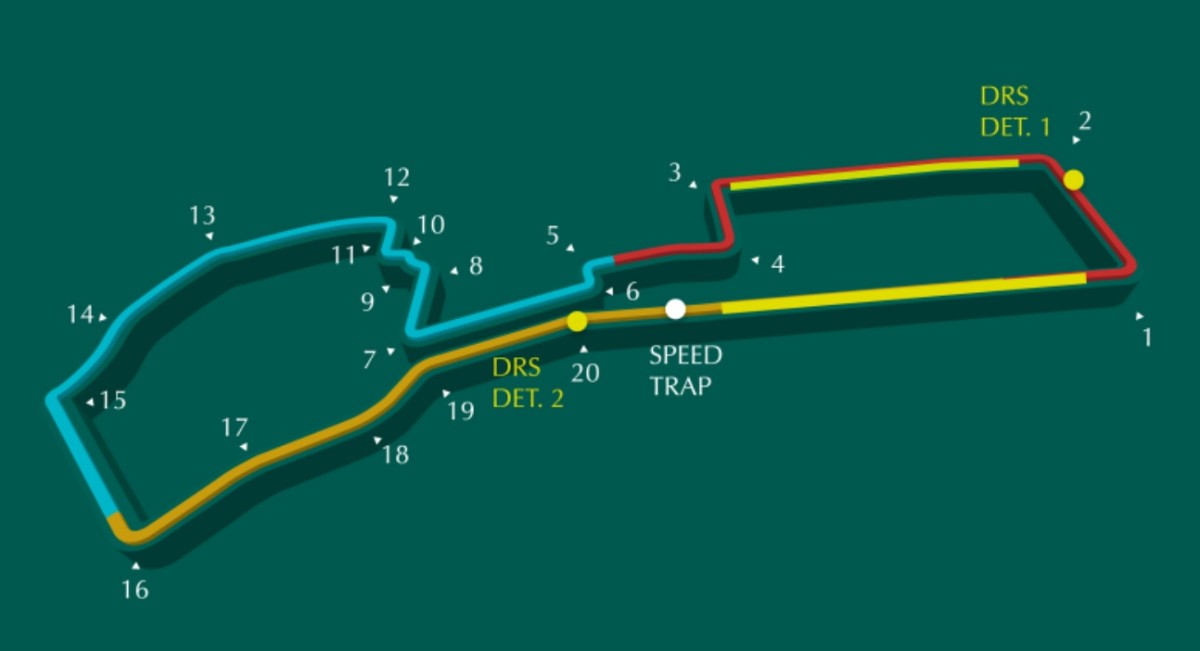
Despite being another street circuit, Baku couldn’t be more different to Monaco. There are plenty of opportunities to overtake, with Turn One and Turn Three being the most popular spots to gain advantage.
The opening straight from pole to Turn One is just 170m – the second shortest of the year after Monaco, meaning plenty of skill is needed to prevent getting caught out at the start.
The first section comprises several 90-degree corners, but the most crucial of these is Turn Two. It precedes a long straight, so getting the exit spot on is critical to lap time. As with all these turns, the walls are ready to punish anybody who gets them wrong.
Turns Eight through 11 make up the famous Castle section. An aggressive entry to one of the tightest sections in Formula One is crucial to a good lap, before the climb up the hill and into the tricky, cambered T11, which sets up the fast sweepers that follow.
Turn 16 is another 90-degree left-hander and, while the wall on the exit is set back from the track, there is a large curb which can destabilize the car and catch drivers out. The corner precedes one of the longest full-throttle sections on the calendar and large amounts of time can be lost here.
From Turn 16 onwards, the next 1.5-miles is a fast, flat-out section, effectively becoming the longest straight of the calendar. It’s here that the claimed the fastest speed in F1 history was recorded, at 378km/h (234.9mph) in 2016.
Fact File: Azerbaijan Grand Prix
- The Baku City Circuit is the fourth longest on the F1 calendar this year – only Spa, Las Vegas and Jeddah are longer.
- A lap of the track sees drivers change gear 71 times, more than at any other circuit on the 2025 calendar.
- The Baku City Circuit also ranks highest in terms of braking energy. The layout is one of two tracks on the 2025 calendar has more braking zones of over 2G. Singapore is the other.
- The section from the exit at Turn 16 to the braking zone for Turn 1 is the longest full-throttle passage of the year. It is around 200 metres longer than the segment from Turns 1 to 5 at Spa-Francorchamps.
- The 2.2 km start/finish straight therefore contributes to a difficult restart for the leader, with a strong tow for the driver behind leaving them vulnerable into Turn 1.
- At just 89.5m, the run down from pole position to the first braking point is the shortest on the entire 2025 calendar.
- Baku has the second-highest number of turns on the F1 2025 calendar, with 20 – a figure it shares with COTA in Austin. Jeddah in Saudi Arabia has the most with 27.
- The name Baku derives from the shortened Persian name Bad-kuye, meaning “wind city”, along with Bad-kube, which means “wind-hitting.” Both terms refer to the famously consistently strong winds that blow through the city.
- Baku hosted an F1 Sprint weekend for the one and only time to date in 2023.
- In 2024, the event moved dates to September for the first time, having previously taken place in the first half of the season (April or May).
- F1 first visited Baku in 2016, when the race was known as the European Grand Prix. It has been known as the Azerbaijan Grand Prix every year since.
- There have been eight Grands Prix held on the shore of the Caspian Sea, with seven different winners. The only driver to claim two victories is Sergio Perez, driving for Red Bull in 2021 and 2023. The Milton Keynes squad is the most successful with further wins in 2017 and 2022, courtesy of Daniel Ricciardo and Max Verstappen respectively. Mercedes has won three times with Rosberg in 2016, Hamilton in 2018 and Bottas in 2019, while last year, Oscar Piastri was first across the finish line for McLaren.
While there have been several names on the winner’s trophy, when it comes to pole positions, one driver is the master of Baku: Charles Leclerc has been quickest in qualifying four times in a row from 2021 to 2024, even at times when his car had not seemed competitive enough to take pole. The other drivers who have secured the top grid slot are Rosberg (2016), Hamilton (2017), Vettel (2018) and Bottas (2019).
Perez leads the way when it comes to podium finishes with 5, followed by Vettel on 3. As for the teams, Mercedes is on 7 ahead of Red Bull with 6 and Ferrari on 5.
Pirelli Tires
Pirelli is bringing its softest trio of 2025 compounds for the Azerbaijan Grand Prix, which is a step softer than last year. In fact, the C6 is back as the Soft, having already been used in Imola, Monaco and Montreal. The C5 will be the Medium and the C4 the Hard.
On a street circuit with low levels of grip and wear, bringing the same selection as in 2024 would inevitably have led to a one-stop strategy. At least this way, considering that this year’s range suffers much less from graining, it opens up the possibility of a two-stop strategy. Moreover, it is clear that this year, most recently at Monza, the teams and drivers have become adept at managing the tyres well, so that the race is unlikely to see very different strategies. Although it’s a street track, Baku has some very long straights where the cars hit very high top speeds, that place significant vertical loads on the tyres.
The fastest ever top speed by a Formula 1 car in an official event was set in Baku, when Valtteri Bottas was clocked at 378 km/h in his Williams-Mercedes during qualifying for the inaugural event in 2016. The high speeds reached on the main straight will put the tires to the test, especially with the downforce generated by the current cars. With another section of track requiring the opposite aero set-up, the teams cannot opt to run too low a downforce level as they would then suffer in the slowest part of the track, where they will rely on tire-generated grip to get the most out of the car. Fortunately, the current Pirelli range has proved to be up to the task of dealing with these extremes of use.
In Baku, the surface of the tires goes through continuous cycles of heating and cooling, with very wide variations in temperature over the course of the lap, because of the different characteristics in various sections of the track.
In the tight parts in the old city, the tyres come under a lot of stress, thus increasing the surface temperature of the rubber. It then cools drastically, especially in the section from the exit of turn 16 to the braking zone for turn 1, which is taken pretty much at full throttle as the corners within it are really just kinks.
Across the front axle, temperatures can reach around 90 °C but by the end of the long straight, it can drop by as much as 40 °C, which can catch out the driver in the braking area during qualifying or if battling in the race, or even more significantly, at the restart following a Safety Car period.
Another factor to consider in Baku is that the buildings alongside the circuit throw shade over the track and, along with the wind, this can significantly reduce air temperature too.
